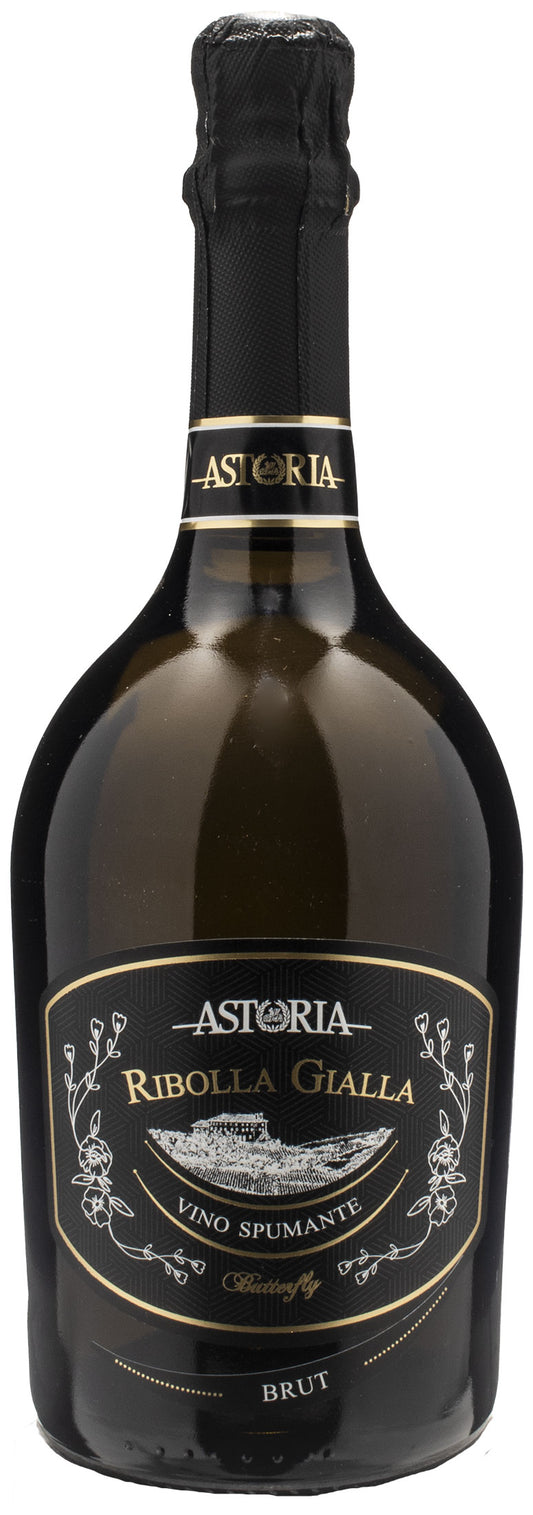Ribolla Gialla is a white grape variety from Friuli, linked to the characteristic Collio Friulano environment, offering a unique profile characterised by minerality and aromatic complexity. The selection includes a variety of Ribolla Gialla wines from the best wineries in the region, such as Tenimenti Civa, Astoria and Collavini. From fresh and lively versions, ideal for aperitifs and light meals, to more structured and complex interpretations, perfect for refined dishes and special dinners, you can find the right Ribolla Gialla wine for every occasion by exploring our best labels. Let yourself be transported into the exceptional world of the best Italian white wines and wines from Friuli, the magic of Ribolla Gialla is only on xtraWine.
Ribolla Gialla
No products found
Use fewer filters or remove all
Use fewer filters or remove all
-
 14.0%Regular price €102,00
14.0%Regular price €102,00Regular price €102,00 Sale price Unit price per -
 13.0%Regular price €16,00
13.0%Regular price €16,00Regular price €16,00 Sale price Unit price perLowest price: Is the lowest price at which the product was on sale during the 30 days before the price reduction, including other promotional periods -
 12.5%
12.5%-9%
Regular price €19,00Regular price €19,00 Sale price Unit price perLowest: €21,00 Lowest price: Is the lowest price at which the product was on sale during the 30 days before the price reduction, including other promotional periodsSale -
 3 VTVitae AIS
3 VTVitae AIS
Italian Sommelier Association (AIS) guide4 BBBibenda
Italian Sommelier Foundation (FIS) guide This has been one of the most prestigious wine guides in Italy for over 10 years.2 VRVeronelli
One of the most prestigious wine guides in Italy.12.5%Regular price €24,00Regular price €24,00 Sale price Unit price perLowest price: Is the lowest price at which the product was on sale during the 30 days before the price reduction, including other promotional periods -
 11.0%Regular price €7,10
11.0%Regular price €7,10Regular price €7,10 Sale price Unit price perSold out -
 12.5%Regular price €11,50
12.5%Regular price €11,50Regular price €11,50 Sale price Unit price per -
 12.0%Regular price €14,50
12.0%Regular price €14,50Regular price €14,50 Sale price Unit price per -
 12.5%Regular price €9,90
12.5%Regular price €9,90Regular price €9,90 Sale price Unit price perLowest price: Is the lowest price at which the product was on sale during the 30 days before the price reduction, including other promotional periods -
 4 BBBibenda
4 BBBibenda
Italian Sommelier Foundation (FIS) guide This has been one of the most prestigious wine guides in Italy for over 10 years.2 VRVeronelli
One of the most prestigious wine guides in Italy.12.5%Regular price €14,00Regular price €14,00 Sale price Unit price perSold out -
 13.0%Regular price €11,50
13.0%Regular price €11,50Regular price €11,50 Sale price Unit price per -
 93 JSJames Suckling
93 JSJames Suckling
James Suckling is an influential American wine critic and journalist who worked at Wine Spectator for 30 years. He left the magazine in 2010 to start his own website and guidebook (JamesSuckling.com). He specialises in Italian and Bordeaux wines.13.0%Regular price €14,00Regular price €14,00 Sale price Unit price perLowest price: Is the lowest price at which the product was on sale during the 30 days before the price reduction, including other promotional periodsSold out -
 12.5%Regular price €16,00
12.5%Regular price €16,00Regular price €16,00 Sale price Unit price perLowest price: Is the lowest price at which the product was on sale during the 30 days before the price reduction, including other promotional periods
(Locale)

Ribolla Gialla
| Color type | White grape |
| Vigor | Good |
| Features | Leaf: medium size, almost whole or with three lobes, rounded; Petiole breast generally open; Upper side legs open, just mentioned, corner at the top of the right lobe; Slightly lobed lobes, flat flap or slightly cup; Upper page of light green, smooth, glabra; Lower green leaf, glabra or light lanterns on the main ribs; Rough, greenish or lightly rosy ribs at the base. Tight enough tooth, with teeth in two series, with convex margins.Bunch: rather small, cylindrical-pyramidal, medium compactness; Visible peduncle, woody to the first branch; Short pedicels of yellowish greenish color; Apparent verrucal tendon; Medium brush, green. Along with the "Ribolla gialla", a time ago there was also a "Ribolla verde", which differs from the first one to be considered to be more productive, to be less subject to sowing and for some characters of the fruit such as: more compact bunch, acini With greenish peel, more juicy but less sugary (in conclusion this "Ribolla" is qualitatively less valuable and provides a less appreciated product of the "Yellow Ribolla").Acino: medium, slightly discoid; Pruinous peel, alabaster yellow, dotted, slightly thick, with persistent navel; Melted pulp, of neutral taste, sweet, slightly astringent. |
| Features wine | With the yellow ribblum you get a straw-yellow wine tending to the golden, with intense, floral and fruity scent. The taste expresses a good balance between freshness and softness, with a delicate and pleasant tasting-olfactory persistence. |
| Growing areas | It is very popular on the hills of the provinces of Udine and Gorizia and on the Slovenian slope. |
| History | Its origin should be Gorizia, presumably corresponding to the Volcano cultivated at the time of Ancient Rome, as the basis for Pucinum, a well-liked wine of the time. Other written testimonies date back to the 12th century, which witness the winemaking of the Friulian Ribolla for the Republic of Venice. Other writings of 1376 in Barbana speak of the sex wine urnas raboli, vinified with the Raibola or Rafla Istrian and Collio. The Ribolla is quoted as a tribute to the visiting personalities in other documents of the late 14th and the middle of the sixteenth century in the town of Udine. The Rabiola, as it was called at the time, was also given to Emperor Carlo V by the Serenissima di Venezie. The Ribolla was also cited by Boccaccio in his writings against throat vices. Germany has always had a certain passion for the Ribolla, with enthusiasts such as Duke Leopold III of Austria who was supplying each year in Trieste according to a well-defined contract. Ribolla's wine was also protected by law thanks to an order of 1446 that punished the fraud by obliging the certification of the place of origin. Ribolla's price list also includes a number of documents written in this period at a cost of 50 in 1365. Other documents date back to the eighteenth century by Antonio Musnig, who cites it among the first Friulian wines. |
| Notes | Resistance to diseases and other adversities: it is a bit prone to slicing and rotting grapes in very moist vintages. For its late sprouting it escapes to the damage of spring frostbite. |
| Productivity | Good and constant. |
| Ripening period | Second half of September. |
| Synonyms | rebola, ribolla, ribolla bianca, raibola, ribuole, ribuèle in Friuli, repula in Slovenia. |












